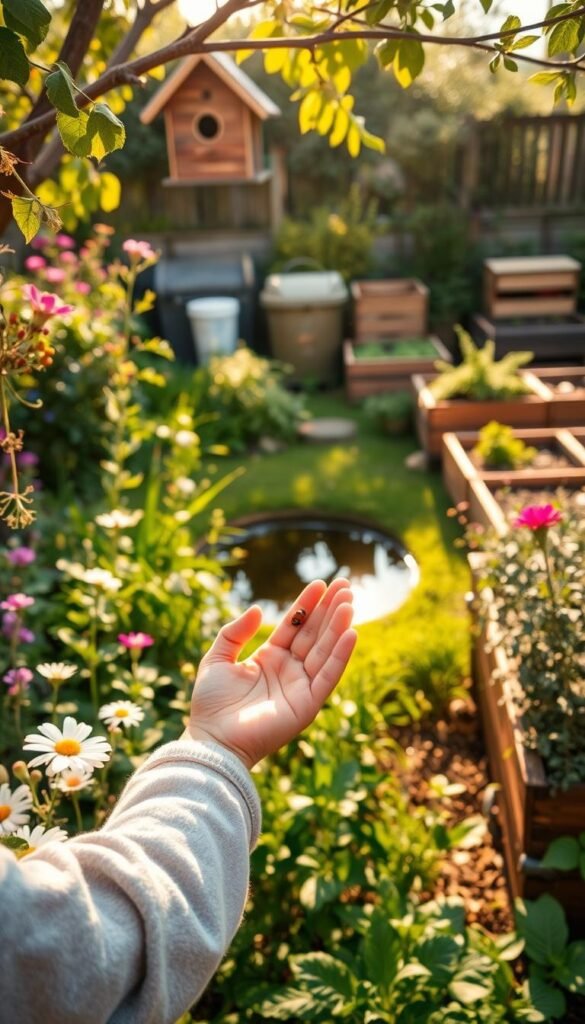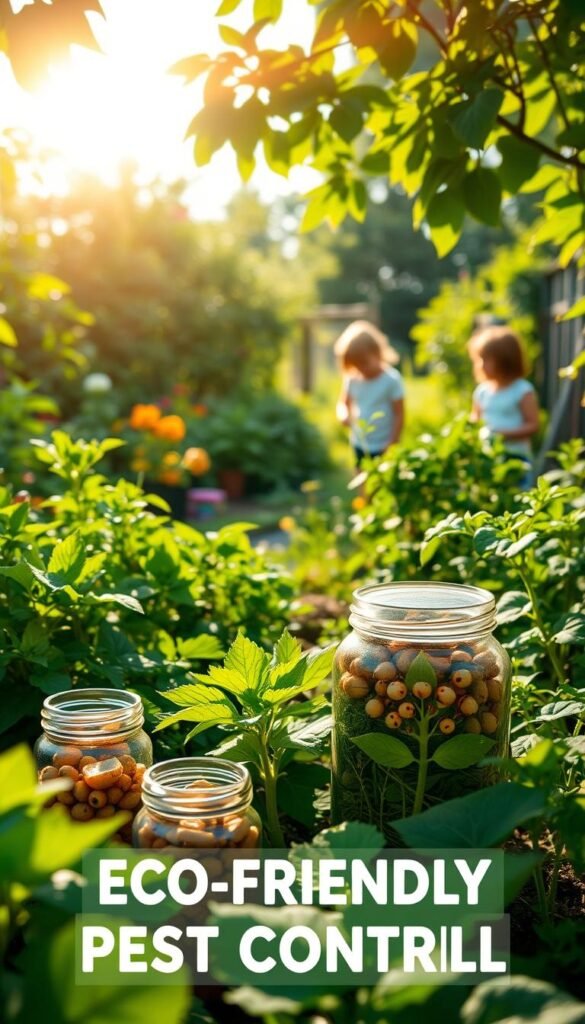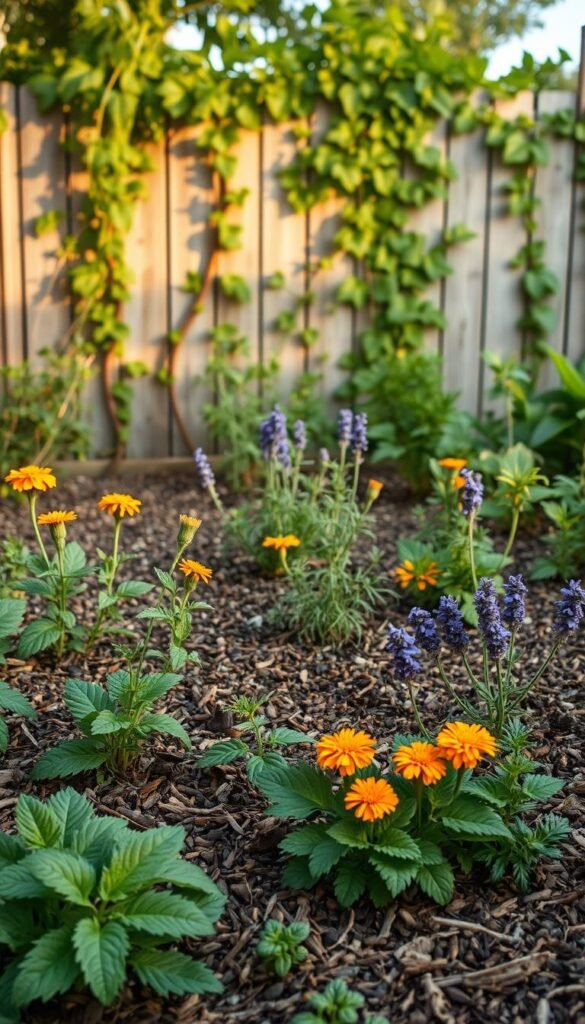Creating a vibrant outdoor space where your family can thrive shouldn’t mean choosing between playtime safety and effective bug management. Many parents are rethinking how they protect their yards as awareness grows about the hidden dangers in conventional sprays and powders. Harsh formulas designed to eliminate unwanted visitors often leave behind residues that linger where little hands explore.
Young ones learn through touch and taste, making them uniquely vulnerable to chemical exposure. Their developing bodies absorb toxins faster than adults, which means even small doses can have outsized impacts. This reality drives the shift toward gentler approaches that prioritize well-being without sacrificing results.
Modern alternatives blend science with nature’s wisdom, offering protection that works with your household rhythms. From plant-based repellents to predator insects that target specific species, these methods keep your green spaces lively and secure. They align with a broader movement toward mindful living—where every choice supports both immediate needs and long-term planetary health.
By embracing these strategies, you’re not just guarding against creepy crawlies. You’re cultivating a sanctuary where curiosity blooms safely, and every dig in the dirt becomes a lesson in stewardship. Let’s explore how to nurture your outdoor haven while keeping what matters most protected.
Embracing Eco-Friendly Pest Control for a Safer Home

Every parent deserves a home where safety and nature coexist harmoniously. Traditional bug sprays often hide risks beneath their convenience—the EPA reports over 60% of conventional formulas contain ingredients linked to serious health issues. These substances linger where kids build sandcastles or pick flowers, creating invisible threats.
Why You Should Make the Switch
Rachel Carson’s warning in Silent Spring still echoes: when we invite harmful chemicals into our lives, they become part of us. Modern research confirms her fears—exposure to synthetic pesticides correlates with developmental delays in children and hormone imbalances in adults. Safer alternatives break this cycle by using plant-derived ingredients that pests hate but your family can tolerate.
Health, Family, and Environmental Benefits
Natural methods protect more than your backyard. They prevent toxins from seeping into groundwater or killing essential pollinators like bees. You’ll notice fewer dead spots in grass and healthier soil where earthworms thrive. This approach nurtures your environment while teaching younger generations responsible stewardship through everyday choices.
Natural Pest Deterrents for Gardens and Play Areas

Nature offers powerful tools to keep unwanted visitors at bay while protecting your family. By blending plant-based ingredients with clever design, you can maintain lively outdoor spaces without compromising safety.
Using Essential Oils and Plant Extracts
Certain essential oils act as nature’s alarm system. Peppermint sends spiders scurrying, while citronella confuses mosquitoes’ navigation. Mix 10 drops with 1 cup water in a spray bottle—shake well before misting around play structures.
DIY Recipes and Homemade Sprays
Combine 2 tablespoons of neem oil with 1 teaspoon castile soap for a gentle aphid repellent. For ants, sprinkle food-grade diatomaceous earth near entry points—it’s harmless to humans but slices through insect exoskeletons. Always test sprays on a small leaf area first.
Creating Physical Barriers with Nature
Marigolds repel nematodes, and basil keeps flies away from picnic tables. Plant these near swing sets or sandboxes. Crushed eggshells form a jagged border that slugs avoid, and cedar mulch deters ticks naturally. These organic pest control methods work best when refreshed every 2–3 weeks.
These strategies do more than manage bugs—they turn your yard into a classroom. Kids learn how plants protect each other, fostering respect for nature’s balance.
Eco-Friendly Pest Control: Safe Solutions for Gardens with Kids

Modern families need yard solutions that work with nature’s rhythms, not against them. While traditional sprays promise quick fixes, they often leave behind residues that linger near swing sets and vegetable patches. Safer options now bridge the gap between efficiency and well-being, using ingredients that pests avoid but your loved ones can tolerate.
Nature-Inspired Formulas That Deliver Results
Neem and tea tree oils pack a powerful punch against unwanted visitors. These plant extracts disrupt insects’ life cycles without harming earthworms or ladybugs. Mix them with water in a spray bottle for a quick barrier around play areas—ants and aphids won’t stick around.
Pyrethrin-based products offer another smart choice. Derived from chrysanthemum flowers, they knock out mosquitoes and beetles within hours but break down in sunlight. This rapid decomposition means your family can return to the yard sooner, with minimal exposure risks.
| Option | Best For | Active Time | Kid-Friendly? |
|---|---|---|---|
| Neem Oil | Ants, Aphids | 5-7 days | Yes (when dry) |
| Pyrethrin Sprays | Mosquitoes, Beetles | 24-48 hrs | After 2 hours |
| Diatomaceous Earth | Slugs, Crawlers | Until wet | Food-grade only |
Look for certifications like OMRI Listed® or EPA’s Safer Choice label when shopping. These stamps confirm the products meet strict standards for organic ingredients and low toxicity. You’ll often find them on ready-to-use sprays or concentrated formulas that dilute with water.
By choosing these solutions, you protect both your kids and the bees pollinating your flowers. It’s a win-win—your yard stays lively, and bedtime stories never include chemical villains.
Integrated Pest Management Strategies for a Healthy Environment
Your backyard can thrive without becoming a battleground between playtime and pests. Integrated Pest Management (IPM) offers a smarter approach that works with nature rather than against it. Think of it as a chess match—anticipate pests’ moves and counter them using the least disruptive methods first.
This strategy starts with knowing your opponent. Learn to identify common invaders like aphids or beetles by their life cycles. Are they active at night? What plants attract them? Answering these questions helps you strike when they’re most vulnerable.
Monitoring and Preventative Techniques
Check your garden weekly for early signs of trouble—chewed leaves, egg clusters, or unusual insect traffic. Keep a journal to track patterns. As one EPA expert notes:
“Prevention beats cure every time when protecting your home and environment.”
Create natural roadblocks to discourage pests. Companion planting marigolds near tomatoes repels nematodes, while mint borders deter ants. Introduce ladybugs to handle aphid outbreaks—they’re nature’s tiny cleanup crew.
When action is needed, start with gentle options like neem oil sprays or diatomaceous earth. Only escalate to stronger measures if infestations persist. This tiered approach keeps your yard safe for cartwheels and caterpillar hunts alike.
Child-Safe Application Methods for Peace of Mind

Your family’s outdoor adventures shouldn’t come with hidden risks. Smart application techniques let you address unwanted visitors while keeping play areas secure. Focus on precision over blanket treatments—think scalpel, not sledgehammer.
Low-Toxicity Products Designed for Families
Look for formulas bearing the EPA’s Safer Choice certification or OMRI® organic seals. These undergo rigorous testing to ensure they won’t harm curious toddlers or family dogs. Boric acid baits and iron phosphate granules tackle ants and slugs effectively while posing minimal risks.
Localized Treatments and Safe Usage Tips
Spot-treat problem zones instead of drenching entire lawns. Use syringe-style applicators for ant mounds or gel baits in cracks where little fingers can’t reach. Always check weather apps—apply sprays when rain won’t wash treatments into play areas.
| Method | Best For | Safety Window | Pet-Friendly? |
|---|---|---|---|
| Child-lock bait stations | Roaches, Ants | 24/7 protection | Yes (tamper-proof) |
| Micro-encapsulated sprays | Mosquitoes, Flies | Safe after 1 hour | Keep away until dry |
| Diatomaceous earth | Bedbugs, Fleas | Immediate | Food-grade only |
Store all products in locked cabinets, and wash tools separately from toys. As one pediatrician advises:
“Assume every treatment zone is a magnet for exploration—plan accordingly.”
With these strategies, you’ll create layers ofsafetythat let kids be kids.
Prevention and Maintenance Practices to Keep Pests at Bay

A pest-free home starts with smart habits that keep unwelcome visitors outside. By addressing attractants and vulnerabilities, you create a living space that’s less inviting to critters while staying welcoming to your family.
Proper Sanitation and Sealing Entry Points
Crumb-free counters and sealed trash bins are your first defense. Wipe spills immediately—even tiny food particles draw ants and rodents. Check window screens for tears, and fill foundation cracks with silicone caulk. These small fixes block paths for insects seeking shelter.
For balcony or patio spaces, consider balcony garden pest solutions like tight-lidded compost bins. Indoors, store pet food in airtight containers. Simple routines reduce the problem before it begins.
Smart Landscaping and Ongoing Monitoring
Trim bushes 12 inches from your house to eliminate pest highways. Choose lavender or rosemary near seating areas—their scents repel mosquitoes naturally. Check leaves weekly for bite marks or eggs, especially under planters.
Replace wood mulch with gravel near foundations to discourage termites. Teach kids to spot chewed leaves during garden adventures. Early detection means less time spent battling infestations later.
Top Eco-Friendly Pest Control Kits and DIY Solutions
Keeping your yard enjoyable doesn’t require harsh chemicals. Today’s options balance affordability with earth-conscious ingredients, letting you tackle invaders without compromising playtime safety.
Popular Kits That Fit Your Budget
EcoSMART offers ready-to-use sprays targeting ants and roaches with plant-based formulas. Garden Safe’s natural insecticides protect flowers and veggies, while BioNEEM’s cold-pressed neem oil handles over 200 pests. These kits simplify maintenance—just follow label directions.
Simple Homemade Fixes
Mix equal parts vinegar and water to disrupt ant trails. For crawling pests, food-grade diatomaceous earth works wonders. Discover more non-toxic methods like citrus peels or soap sprays that deter bugs naturally.
Pro Insights for Lasting Results
Experts recommend rotating treatments to prevent resistance. One parent shared: “Placing mint near our sandbox cut ant visits by 80%.” Pair store-bought products with preventive habits—like sealing trash bins—for layered protection.






